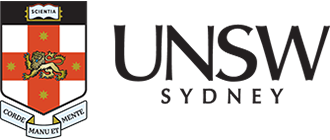
Andrea Morello, PhD, a Scientia Professor of quantum engineering at the University of New South Wales (UNSW), was selected as one of the Cell Press 50 Scientists that Inspire for his work in quantum computing in silicon.
Dr. Morello began his career with an undergraduate degree in electronics engineering at the Politecnico di Torino in Italy. His growing passion for experimental quantum science led him to complete his PhD in physics in 2004 at the Kamerlingh Onnes Laboratory, Leiden University, in the Netherlands, followed by a 2-year postdoc at the University of British Columbia in Vancouver, Canada. His studies there focused on nuclear spin dynamics in molecular magnets, their coherence properties, and applications of molecular magnets to quantum computing.
He started at UNSW as a senior postdoc, before rising up the ranks to his current position. His work has focused on developing spin-based quantum hardware in silicon, culminating in the world’s first demonstration of a spin qubit in silicon in 2012. Since then, his team has remained at the forefront of semiconductor quantum hardware research. Dr. Morello is also passionate about “inspiring younger generations to take the challenge of working in this exciting field.” He has helped establish the Bachelor of Quantum Engineering program at UNSW and has contributed to multiple YouTube videos to demystify quantum technology.
In this Q&A, he shares his excitement for his field, along with the challenges to come, and provides guidance to individuals pursuing a scientific career.
What inspired you to become a scientist?
I have always had an inkling for science and curiosity-based research. I have been extremely fortunate to grow up in a country that gave me excellent, free, public education. From there onwards, I have taken science and life as an adventure, and it has always paid off.
Toward the end of my engineering degree, it became clear to me that I would not be satisfied working in an industry or application-based job. I was fortunate enough to have the opportunity to swerve toward a basic science field for my subsequent studies while still building upon the hands-on skills I had learned as an engineer.
I have now come full circle and have established a quantum engineering degree at UNSW that deliberately blends curiosity with applications. However, my research remains firmly at the fundamental end of the spectrum.
Tell us about a moment of discovery that has been a highlight of your career.
The most striking one was around 2008, when we realized that an experiment performed by my predecessors had been misinterpreted. A simple theoretical model showed that the true explanation had to be completely different. Following this realization, we redesigned the whole platform for donor spin qubits in silicon, which shortly thereafter became the world’s first spin qubit in silicon.
What are you most excited about in your field right now?
The field of semiconductor quantum hardware is going through an exciting and challenging transformation. Industry players, large and small, are entering the field alongside academic researchers. They bring along unprecedented resources and capabilities. I am excited to see where this change of pace will take us and how I can contribute to accelerating it further with leftfield, out-of-the-box ideas.
Do you have words of wisdom for students thinking about science—or advice you would give to your younger self?
The most important wisdom, which applies to anything and everything, is to always put people first. Once you have found a few research groups that are healthy, dynamic, and supportive, you can choose the project that excites you the most. Even earlier, when choosing a degree and a university, find out what the human climate is, what the culture of the place is.
Only then, when the human factor is in place, you can think about real science. Do it rigorously, without cutting corners. Don't worry if you’re slower or if others get away with things that you think are below standard. Always take the high road and build up your reputation at every step.
What does innovation in science look like to you?
Innovation in science is a moving goalpost. It means remaining creative, and it means understanding where the edge of human knowledge resides and actively seeking to operate in that space.
What do the next 50 years look like for your field or for science more broadly? What changes would you like to see?
I would like to see science become increasingly engrained in our culture, in our way of life, the normality of our existence. I would like for scientists to stop being depicted as nerds and introverts or geniuses with intellectual superpowers.
For my field, the next 50 years will tell us whether a quantum computer can be built and what it can be used for. It will be one of the most exciting and transformational developments ever brought about by humankind.
